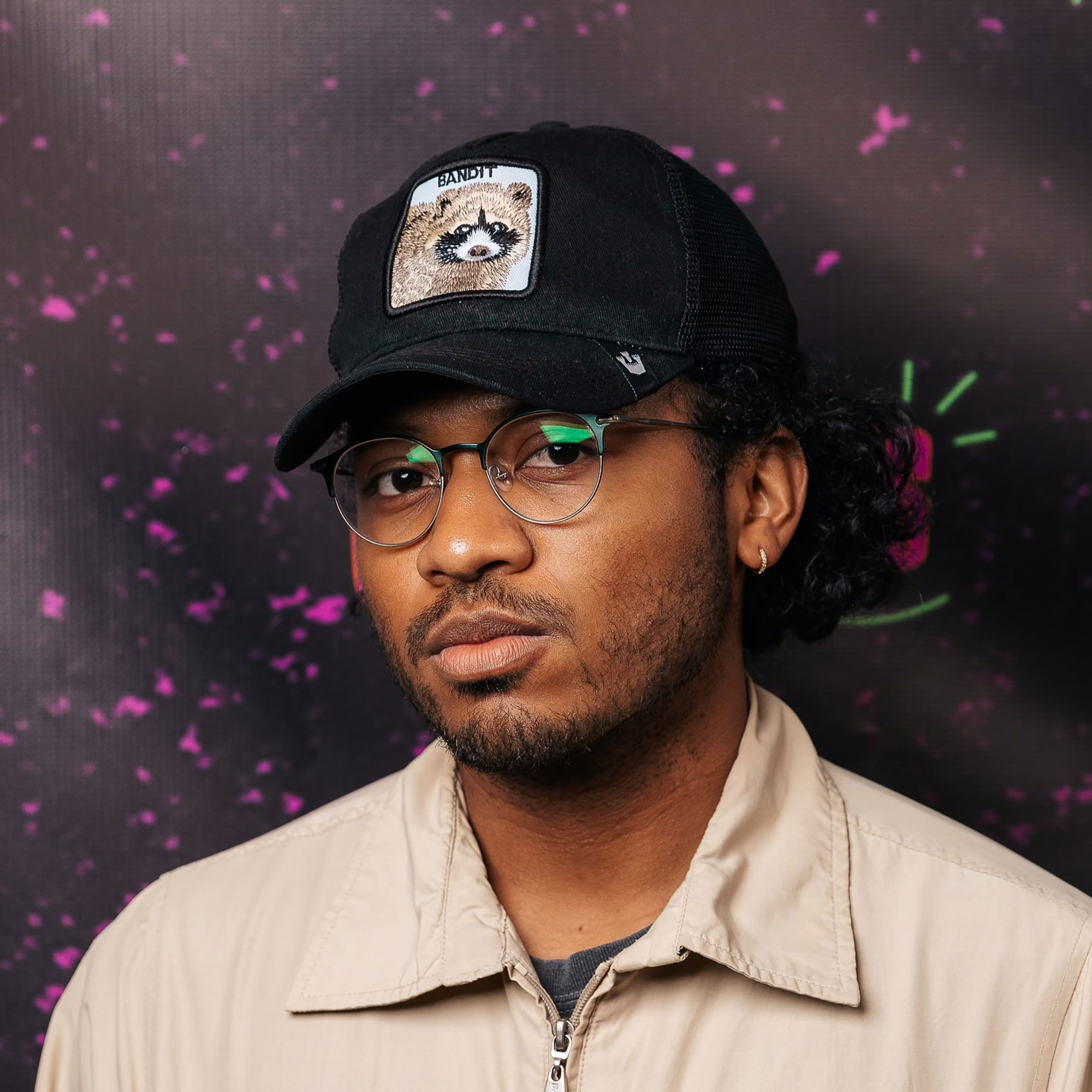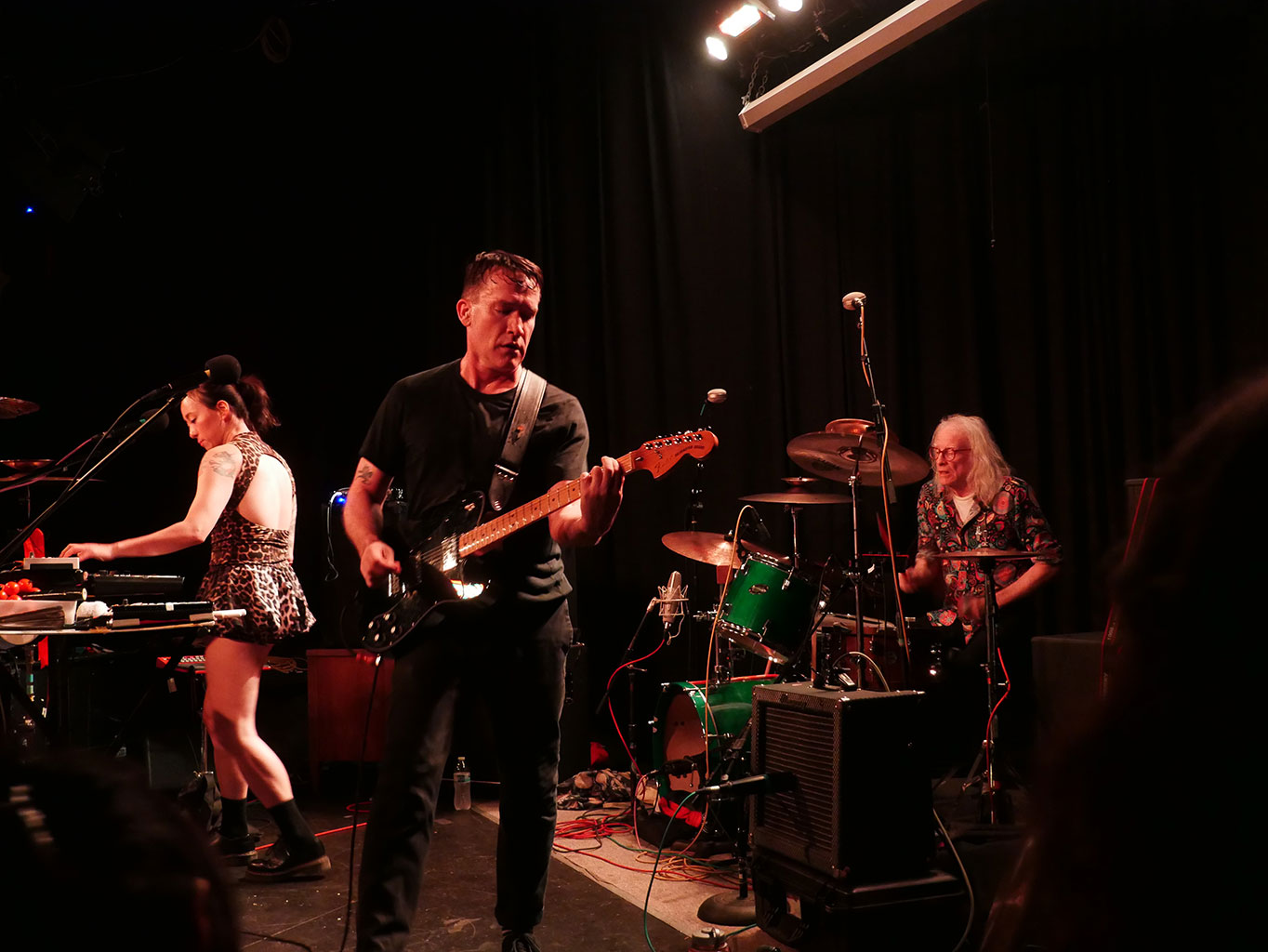
It almost makes too much sense that Kinski would choose to do a live score to the experimental silent film, Berlin: Symphony of a City. The band named themselves after Klaus Kinski, the wonderfully insane sidekick to legendary German New Wave director Werner Herzog (whose surname was also used in a Kinski side project). On top of that, Kinski’s sound has often drawn comparisons to the legendary bands of the German krautrock era. Basically, Kinski is steeped in kraut. So the pairing of them with Ruttman seemed like a match made in heaven. While there certainly were a few heavenly moments to be had, the performance often left me frustrated and disappointed at the possibilities for what could have been. The night began first though with a mesmerizing live score to the brilliant experimental short animation by Ruttman entitled Opus 1. It proved to be one of the highlights of the evening. While accompanied by a subdued yet ominous drone by the band, the flashes, pulses, and movements of various shapes sliding on and off the screen left me hypnotized by the synaesthetic experience being unfurled before my eyes and ears. Unfortunately, this initial excitement just made the underwhelming experience of the main performance that much more disappointing.
Symphony of a City begins with an ominously tranquil Berlin awaking from its slumber. The band starts off much like the film, offering serene atmospherics with a hint of uneasiness bubbling below the surface. The matching tones of the film and the band certainly heightened the overall experience. “The film was really emotional in a sort of experimental way,” says Martin when I asked him what attracted his band to the project. Watching the opening segment, I could definitely see what Martin meant. The film achieves this great interplay of experimentation and emotionalism, enveloping the viewer rather than alienating him. However, pretty quickly Kinski suspended their more contemplative sections and launched into a full on rock assault. While potentially sounding great by itself, the harder segments of Kinski’s score seemed awkwardly placed and out of touch with the overall mood of the film. Overall, the gap between the film and the music left me feeling like I was watching two separate performances that by coincidence were sharing the same stage.
Explaining the writing process for the film score, Martin says, “We just kind of had to change arrangements of the stuff that was already written. It’s not super tight to the film but it definitely kind of ebbs and flows the way the film did.” Martin went on to describe how the use of montage by Ruttman subconsciously affected the band’s decision to string together a combination of old and new material.
“Around half [the score] is sort of brand new things,” says Martin. “[It’s comprised of] bits and pieces that we haven’t used and a couple pieces that we came up with just for the film. It kind of became this retrospective of our band.” One difference was that the use of montage employed by Ruttman achieved more cohesiveness than the band did. While I did appreciate Kinski’s avoidance of keeping in perfect line with the film and thereby steering clear of coming off trite and overly ‘film score-ish,’ it would’ve been nice to see a little more cohesiveness overall.
What further punctuated the rift between the band and the film was the venue. It seemed as though Kinski was playing to a different audience than the film and venue could accommodate. Talking about the importance of venue for his band’s recent stint opening for Tool, Martin explains that, “a lot of people were sitting down. It was interesting because some of the shows had no floor seating and some would all be floor seating and the shows were completely different because of that. [Simply having] a bunch of people standing up it would change the vibe.”
During the performance at the Triple Door, it felt like the band’s ideal audience was a standing-room only crowd, but unfortunately, a posh theater like The Triple Door that offers dinner seating and three-course meals seems better suited for Tony Bennett than a band that prefers rock club environments. At the very least, the venue fit the band’s quieter sections better than its louder moments. Watching the band, I felt like I was at a raging rock show that I would’ve loved to have just gotten out of my seat and started moving to. I thought about what it must have felt like for kids to go to rock n’ roll shows in the 50’s forced to stir in their seats only to rip them out of the floors in the heat of the moment.
Interestingly, when I listen to Kinski’s new record, Down Below It’s Chaos, I get the same sense of excitement and disappointment. It’s as if the film combined with the live music accented Kinski’s greatest strengths and weaknesses. Again, on their new record, its limitation consistently results from the irreconcilability between the band’s penchant for straight-ahead rock and more heady experimentation. If it weren’t for the grainy distortion and atmospherics, the more straightforward segments of the record on songs like ‘Dayroom at Narita Int’l’ or ‘Punching Goodbye Out Front’ would approach generic 70’s AOR rather than Can or early Sonic Youth. Like their performance at The Triple Door, the songs on Down Below Its Chaos repeatedly follow this pattern of frustration. Often starting with intriguing noise drones or psychedelic guitar swirls, the majority of them all too often slide into generic sounding anthemic rock instrumentals. It’s clear that Kinski have the requisite talent to construct truly unique and exhilarating music (something not entirely absent from the new record mind you), but perhaps they still need to work their newfound love of rock theatrics out of their system.
In a way, the frustrating gap that seems to typify Kinski’s current output resembles the relationship between rock music and experimentalism altogether. At one moment, the band interlaces beautiful ambient melodies free of any particular structure. In another instance, they’re rocking out like they should be playing at Budokan (this was not helped by the clapping of the audience between the loud parts). This is not at all to say that rock music is incompatible with avant-garde experimentalism. Some of Kinski’s own influences were pioneers in bridging this gap (i.e. Sonic Youth, My Bloody Valentine, etc.), but Kinski seems to have each foot on both ends, unsure of which side to fall on. While it’s potentially intriguing to avoid making that choice, keeping the two sides distinctly juxtaposed can often do a disservice to both of their sensibilities. Here’s hoping they actualize the synthesis readily within their reach sometime soon.






